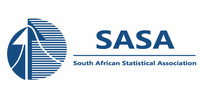Speaker
Dr Alfeus is a Lecturer in the department of Statistics and Actuarial Science at Stellenbosch University, South Africa. He has a PhD in Quantitative Finance from the University of Technology Sydney (UTS) in Australia with a dissertation entitled "Stochastic Modelling of New Phenomena in Financial Markets". He is a Mathematician by training with a BSc degree in Mathematics and Physics from the University of Namibia. He holds masters and honours degrees in Financial Mathematics both with Cum Laude from Stellenbosch University, South Africa. He holds a long list of academic awards, and he was the winner of the 2018 International Young Investigator Training Program (YITP) prize at the XIX Workshop on Quantitative Finance held at the University of Rome Tre in Italy. He held an academic visiting position at the University of Padova, northern Italy. He previously worked as a Risk Analyst at Namibian Financial Institutions Supervisory Authority (NAMFISA), a Research Associate at UTS Finance, a Lecturer of Financial Mathematics at the University of Wollongong Australia, and AIFMRM Postdoctoral Research Fellowship at the University of Cape Town. His current research interests focus on Computational and Mathematical Finance, more specifically in numerical methods for pricing of options and model calibration including model empirical analysis.



